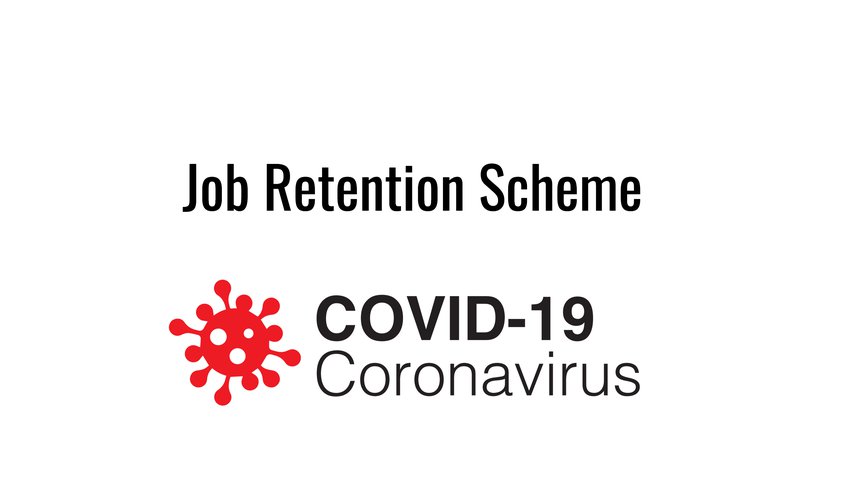Coronavirus Job Retention Scheme - what you need to know

Coronavirus Job Retention Scheme - what you need to know
Correct as at 27 March 2020
FAQS
What is it?
The Coronavirus Job Retention Scheme is designed to support employers whose operations have been severely affected by coronavirus (COVID-19). It enables employers to continue to pay wages for those that would otherwise have been laid off during the coronavirus crisis. This applies to employees who have been asked to stop working, but who are being kept on the pay roll. These are called ‘furloughed workers’ (employees on a leave of absence).
The scheme covers the cost of wages backdated to 1 March or the date on which the employee had been laid off, whichever is the later, and is initially open for 3 months (until 31 May) but will be extended if necessary.
The portal required to operate scheme is expected to be up and running by the end of April.
Which employers are eligible?
All UK employers with a PAYE scheme created and started on or before 28 Feb 2020 and with a UK bank account.
This includes businesses, charities, recruitment agencies paying agency workers through PAYE and public authorities. Employers (public and non-public sector) receiving public funding for staff costs should use that money to pay staff and should not furlough them.
Organisations receiving public funding specifically to provide services necessary to respond to COVID-19 are not expected to furlough staff and so should not access the scheme.
Where a company is being taken under the management of an administrator, the administrator will be able to access the scheme.
How much can employers claim?
80% of furloughed employees’ usual monthly wage costs, up to £2,500 a month, plus the associated Employer National Insurance contributions and minimum automatic enrolment employer pension contributions (so capped at 3%) on that subsidised wage.
However, benefits are not covered and any employer pension contributions in excess of minimum auto-enrolment contributions are not covered.
While on furlough, the employee’s wage will be subject to usual income tax and other deductions.
Full time and part time salaried employees
The employee’s actual salary before tax, as of 28 February should be used to calculate the 80%. Fees, commission and bonuses should not be included.
Employees with variable hours
If the employee has been employed (or engaged by an employment business) for a full twelve months prior to the claim, the employer can claim for the higher of either:
- The same month’s earning from the previous year
- Average monthly earnings from the 2019-20 tax year
If the employee has been employed for less than a year, the employer can claim for an average of their monthly earnings since they started work.
If the employee only started in February 2020, the employer should claim a pro-rata sum for their earnings so far.
Employers access the grant by submitting the relevant pay information to HMRC though an online portal. They can only submit one claim at least every 3 weeks which is the minimum length of time an employee can be furloughed for. It is unclear whether this is one claim per employee.
Which employees are covered?
Those on the employer’s PAYE payroll at 28 February 2020. Employees hired after 28 February are not covered and so for these employees the employer will have to decide whether to pay them the contractual salary and benefits or consider redundancy or other options.
Those made redundant since 28 February 2020 are covered if they are rehired by their employer and placed on furlough.
The employees can be employed on any type of contract, including temporary or zero-hour contracts.
While on furlough, the employee must not undertake work for or on behalf of the employer - this includes providing services or generating revenue.
Employees working, but on reduced hours or for reduced pay, are not eligible.
Employees on unpaid leave?
Employees on unpaid leave cannot be furloughed, unless they were placed on unpaid leave after 28 February.
Employees on sick leave?
Employees on sick leave or self-isolating should get Statutory Sick Pay, but can be furloughed after this.
Employees who are shielding in line with public health guidance can be placed on furlough.
Employees on maternity leave, contractual adoption pay, paternity pay or shared parental pay?
The guidance suggests that these employees can be furloughed. However, the guidance is unclear on how this would work and employers considering this should see further advice.
Employees with more than one job?
If an employee has more than one employer they can be furloughed for each job. Each job is separate, and the cap applies to each employer individually.
The guidance does does not deal with this expressly with the situation where an employee has more than one job for the same employer. However, the fact that an employee is not able to undertake any work for their employer while on furlough suggests that an employee with two jobs with the same employer would have to be furloughed from both jobs to be eligible.
Employees volunteering and training?
A furloughed employee can take part in volunteer work (subject to public health guidance) or training, as long as it does not provide services to or generate revenue for or on behalf of their employer.
If an employee is required to complete training whilst they are furloughed (for example an online training course), they must be paid at least the National Living Wage/National Minimum Wage for time spent training, even if this is more than the 80% of their wage.
How much will the employee receive?
As a minimum, employers must pay their employee the lower of 80% of their regular wage or £2,500 per month, less deductions for income tax, National Insurance Contributions and employee pension contributions on the subsidised wage.
This can bring their wages below the National Living Wage/ National Minimum Wage as they are only entitled to this when they are working. However, as stated above, furloughed employees must be paid the National Living Wage/ National Minimum Wage if undertaking training.
An employer can also choose to top up an employee’s salary beyond this but is not obliged to. Employers will be responsible for all employment costs for any top-up.
Is there a minimum length to furlough?
Employees must be furloughed for a minimum of three weeks. However, the employer can place an employee on furlough more than once, and one period can follow straight after an existing furlough period, while the scheme is open.
This enables employers to rotate furloughed employees so they take it in turn to be furloughed.
How do you furlough an employee?
Employers need to designate affected employees as ‘furloughed workers,’ and notify them of this change.
Employers should discuss with their staff and make any changes to the employment contract by agreement. Usual equality and discrimination laws apply when making decisions, including who to offer furlough to.
If sufficient numbers of staff are involved, it may be necessary to engage collective consultation processes to procure agreement to changes to terms of employment. This seems to be referring to procuring changes to terms and conditions by dismissal and re-engagement. Therefore, if employees agree readily to be furloughed it would seem collective consultation is not necessary.
To be eligible for the subsidy employers should write to their employee confirming that they have been furloughed, stating which terms and conditions of employment have been changed, and keep a record of this communication and employees’ agreement to it.
This is not legal advice and should not be relied on as such. Specific advice should be sought to address your own circumstances.
The articles published on this website, current at the date of publication, are for reference purposes only. They do not constitute legal advice and should not be relied upon as such. Specific legal advice about your own circumstances should always be sought separately before taking any action.

